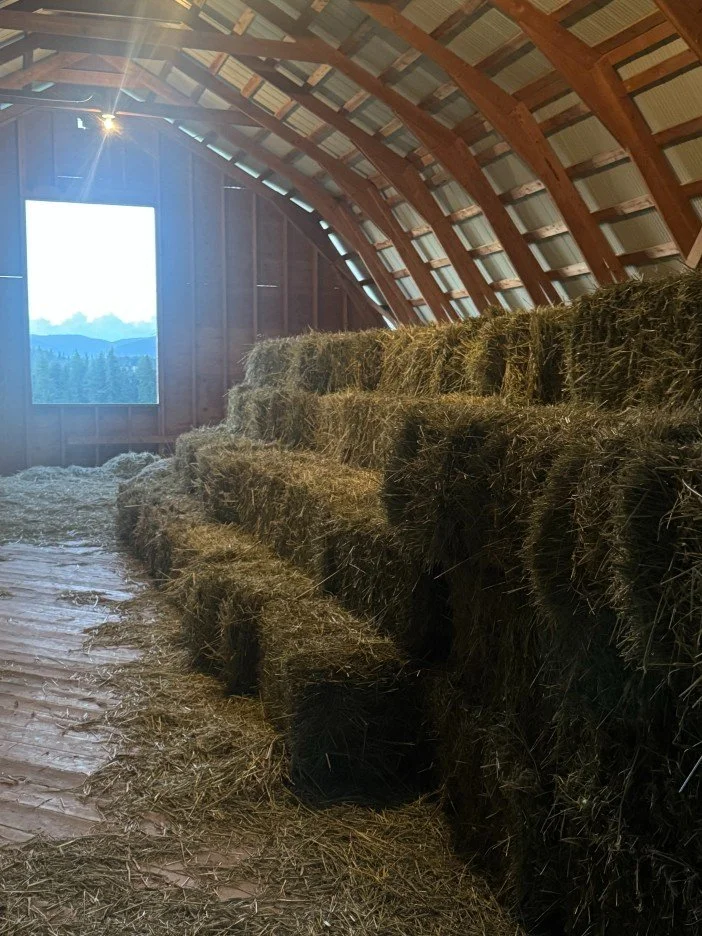Hay Changes. comparing year to year
“Have you had your hay tested to confirm that the sugar and starch levels are appropriate?”
“Yep, we tested it a few years ago and it was good.”
This is one of the most common things that we hear from people when helping to analyze why their horse has gut issues such as diarrhea, colic and ulcers, or why they’re struggling to maintain a horse with metabolic issues such as insulin resistance, EMS or PPID/Cushings.
There is a common misconception that each year, hay from the same field will have the same nutritional value, but that isn’t the case. The weather, field maintenance and harvesting are the biggest factors that determine the quality of the finished product that ends up in your barn.
The weather during the growing season:
As our weather differs from year to year, so does the grass. The growth patterns are affected by how much rain and sun the grass sees, in time to maturity, the volume and nutrients. Some grasses and legumes will be less affected by drought than others, so even the ratio of species within the crop can fluctuate, resulting in significantly different nutritional profiles. Just like with other plants, when hay fields see ideal growing conditions, complete with the optimal light, moisture and temperature, the crops will be much happier and healthier.
Field Maintenance:
Fertilizing: Certain fertilizers will increase the growth rate and yield of the crop, while others will rebalance the pH of the soil or affect certain minerals in the crop. While some grasses will excel in more acidic vs alkaline soil, or soil with higher vs lower nutrients, others will barely survive, resulting in a varying ratio of grasses and legumes depending on the fertility of the soil. In the case of a field that has not been fertilized in years, each year the quality and volume of hay may decrease until the time of fertilization. Once fertilized, the hay could be much more productive and of a higher quality than in years past.
Reseeding and overseeding: Reseeding or overseeding can result in a completely different selection of grasses and legumes, leading to vastly differing nutritional profiles. This can alter the suitability of the hay for horses with specific dietary requirements.
Irrigating: Adding regular water to a hay field while growing will have a remarkable effect on the growth and health of the field. Just like with all other plants, regular watering will provide a much healthier and happier growing environment. This may not provide a higher yield off a field, but the nutritional values will be strongly affected. Overwatering can also be as detrimental to a field as underwatering. Like with the weather, the moisture of the soil will have a direct effect on the ratio of grasses within the finished hay.
Harvesting:
At the time of harvest, the moisture in the soil, humidity, wind and temperature are all very important factors. Farmers will spend weeks watching the weather to ensure that they pick the perfect time to cut and bale. If the temperature is too cool, the soil is too moist, or the humidity is too high, a hay crop can quickly become a perfect breeding ground for mold. Long drying times can also result in lower nutrients in the hay.
Dry ground, a few days of warm weather, low humidity and a light breeze will ensure a nice dry crop for bailing. Ensuring that the hay is removed from the elements promptly after baling is crucial to ensuring a high-quality crop. While in some places these conditions are easy to come by, in other places you may have to wait until the hay is over ripe or you may have to cut before it’s quite ready for harvest, simply because that might be your only opportunity to get the hay off the field.
Over ripe hay can have higher fiber, lower digestible nutrients, and the sugars and starches will also see significant changes. Even excessive heat can actually lead to nutrient loss and decreased palatability. Rain on a cut field can very quickly ruin a crop, but in some cases the hay can be saved. Hay that has been rained on will usually have lower sugars and starches, and the visual quality will be impacted.
In some places, the time of day that the hay is baled is another important factor to ensuring the proper moisture content for baling.
As you can see, there are many factors which can alter hay off the same field from year over year. We have some interesting hay tests below to show the comparison year over year off the same fields. One is fertilized annually, one was newly planted two years before we started testing, and one is a field which has not seen maintenance in years.
Field #1:
Fertilized annually, not irrigated. Timothy, Brome, Orchard Grass Mix. Alberta, CAN
Field #2:
Newly worked hay field, not irrigated. Timothy, Brome, Orchard Grass Mix. BC, CAN
Field #3:
Unmaintained field, not irrigated. Grass mix with a little bit of Alfalfa. BC, CAN
Interested in learning how to read and understand these hay tests? We are happy to show you.

